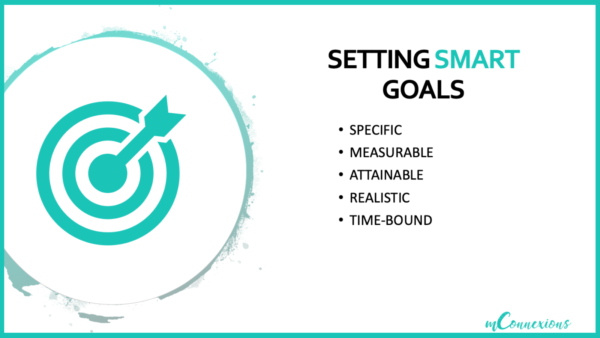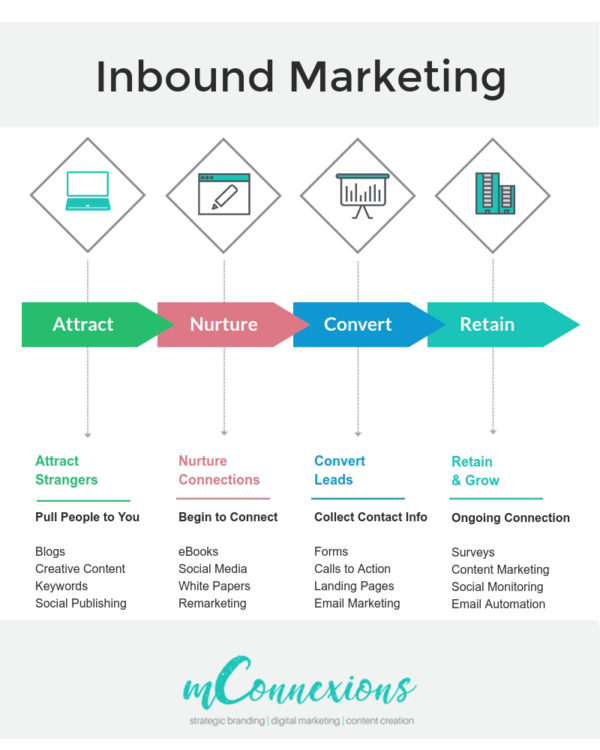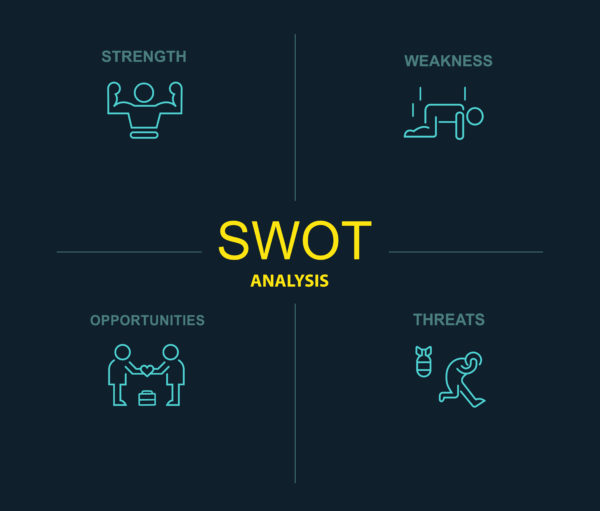New clients often come to us, deep in the marketing weeds, spending their time and money without a real plan or strategy for what they’re doing or why they’re doing it. Because of that, they’re not seeing results from their marketing efforts.
Ads aren’t working. Emails aren’t being opened. Social media engagement is down. Blogs aren’t driving enough web traffic. Leads just aren’t converting the way they’d like them to.

You know you need to be marketing, so you dive right in. Sometimes without a plan. You’re building the airplane while it’s flying! Sound familiar?
Sometimes, you do have a plan…but you haven’t checked on it in a while, so you don’t know if it’s working or if it needs to be adjusted. Or, maybe you know you’re off track but you aren’t sure what your next move should be — and you’re too busy to figure it out.
We should never be too busy to figure out how to make more money!
Whether you need a bit of a boost to get back on track — or a fresh start — you’ve landed in the right place.
We help our clients grow their businesses through marketing — specific and strategic marketing efforts that start with a strong marketing strategy.
Building a marketing strategy is like building a house — you must have a solid foundation in order to have a strong finished product — in our case, a scalable, successful, competitive business.
This foundation is our blueprint for attracting clients or customers by communicating the benefits of your business and key differentiators — the things that set you apart from your competitors.
At mConnexions, we build this marketing strategy for our clients in five steps:
1. Take a Snapshot of Your Company’s Current Situation
What is your starting point, where are you right now?
Run a SWOT Analysis
One of the best ways to get a thorough look at where your business is right now is to run a SWOT analysis. This will help you to identify your business’ strengths, weaknesses, opportunities, and threats.
Having a clear view of what you’re best at and which areas need improvement, and keeping an eye on factors that have the potential to put your business at risk, will point you in the right direction when you’re building your marketing strategy. Keep in mind that your strategy should be tied directly to your business plan.
When I meet with clients, the first thing we do is talk about how business is going. What are your pain points, what are your opportunities? That all comes before we talk about social media or building a new website. Because it all ties together.
The SWOT analysis is a well-known tool, but for those who may be doing this for the first time, here’s a breakdown:
The first two components are internal-facing. Strengths and weaknesses refer to internal factors, which means the resources and experience readily available to you. Examples could include: Financial resources, physical resources like your location, facility and equipment, and human resources such as staff. What are your strong points? What are your weaknesses?
The next two letters in the acronym refer to external forces — opportunities and threats. These typically refer to things beyond your direct control, such as market trends, the economy, changing laws or regulations, and politics. Things that are beyond your control but that will impact your business.
Want to identify your own strengths, weaknesses and threats? Here is a SWOT Analysis worksheet that we use with our clients.
Once you fill out your SWOT analysis, you’ll need to come up with some recommendations and strategies based on the results so you can prioritize what to tackle first.
For example, you may find some weaknesses or threats that need to be addressed right away like a new regulation that impacts staffing. Obviously, those will take top priority. You might also find a time-sensitive opportunity that you need to move on right away.
Create a Competitive Analysis

Alongside the SWOT analysis, we also like to run a competitive analysis. While the SWOT looks at your own business, a competitive analysis is going to look at your competition.
It’s just as important to know what’s happening around you in the market. In order to be competitive, you need to know what your competition is doing. Ask yourself:
- What are your competitors doing well?
- What are their struggles?
- Where are their weak links?
- Where are they leaving gaps for you to close in and take more market share?
- What are they currently doing with their marketing efforts?
Look as closely at your competitors as you do at yourself. If it applies to you, you might also want to look at an unrelated business that just seems to be nailing this whole marketing thing. What are they doing that resonates with you or with their audience and how might that apply to your business?
Then, based on what you’ve analyzed so far, determine or refine your value proposition.
In its simplest terms, a value proposition is a positioning statement that explains what benefits you provide, who your target buyers are, and what makes you unique and better than the competition.
Your value proposition is one of the most important conversion factors — it could make or break a sale. The best value propositions are clear, to the point, and focus on solving customers’ problems. It’s not just about you, it’s about what you can do for your customers.
With a SWOT analysis, a competitive analysis, and a strong value proposition under your belt, you have a good snapshot of where you are right now.
2. Determine Your Marketing Goals
Your business plan answers your big-picture goals — outlining the next year, perhaps the next three years, five years, ten years — and where your business is headed. Where do you want your marketing to go? Make a list of your goals and be as specific as possible.
Some examples include:
- Building brand awareness
- Establishing thought leadership
- Increasing brand engagement
- Generating a high volume of qualified leads
Now — let’s make them more specific. Without specifics, you could easily hit these goals and still not generate any revenue!
Poorly defined marketing goals are statements like, I want more website visitors or I want to grow a larger email list. How many website visitors do you want? What do you want them to do on your website? How many contacts do you want on your mailing list — and are you looking for specific contacts?

Set SMART goals — goals that are specific, measurable, attainable, realistic, and time-bound, we can actually track and measure our success.
So instead of saying you want more website visitors — quantify that. For instance,
- We need 10,000 visitors resulting in 10 customers within the next 6-months from our inbound marketing efforts in order to achieve our revenue goal of $100,000 from inbound marketing.
- Or, we would like to generate 2 new customers from our current email marketing campaign and keep all qualified leads on our list to keep them warm for future sales.
Both goals are specific, measurable and include a timeframe — for our example, we’ll assume they are attainable and realistic.
The SMART method helps push you further, gives you a sense of direction, and helps you organize and reach your goals.
Some tips to help you set SMART goals:
- Identify how much revenue you need to generate from your marketing efforts. You can keep this simple by asking a few questions; Where is your revenue right now? Where do you want it to be at year’s end? The gap between the two is how much you need to generate from your marketing efforts.
- Then you’ve gotta do some math and determine how many sales you need in order to hit those revenue goals. Take your revenue gap and divide it by the value of your average sale. For example, if the revenue needed is $100,000 and your average sale is $20,000, then you need 5 new customers.
- Then, identify your closing rate and how many opportunities you need. Sticking with our example — if you need 5 new customers and your closing rate is 50%, and 50% of your opportunities go for a close, then you’ll need 20 opportunities in order to hit your business goal.
From there, we can go deeper to identify how many leads are needed and how much traffic is needed to generate those leads. We can also implement other key business goals — all of which are important once you move beyond the basic marketing strategy and implementation.
3. Define Your Target Audience
The beauty of digital marketing is that we no longer have to cast a big net and hope to catch the right clients at the right time. Now, we can really narrow in on the ideal client who is going to buy our goods or services — but first, we have to know who we are targeting.
One of the biggest mistakes businesses can make in marketing is not starting with a deep understanding of customer’s needs, goals, and challenges. We end up making a lot of assumptions about how we can help when we focus on ourselves and what we provide instead of our customers and what they need.
How well do you know your customers? Are you using that knowledge in your marketing?
This is where creating a buyer persona becomes so crucial.
This is where creating a buyer persona becomes so crucial.
Think of a buyer persona as a detailed description of your ideal client. Ultimately, we create a semi-fictional character that represents key traits of your audience and we keep this top of mind with everything we do in our marketing campaigns. These traits are based on the data you’ve collected from user research and digital analytics, so that you have insight into what your customers are thinking and doing as they weigh buying options. Keep in mind, you might have multiple personas that you target, so keep each persona specific.
Buyer personas can help you to develop a deeper understanding of customer needs so that you know how to best market your products or services. They can also help you prioritize projects and resources, and create a better user experience, which generates loyalty and fosters an ongoing client relationship. We all know it’s less costly and less work to keep a client than it is to find and build a relationship with a new one so loyalty and user experience are crucial.
Here’s just a snippet of the buyer persona worksheet questions that we share with our clients:
- Who is your ideal buyer?
- What is this person’s background?
- What are some of the goals, values, and challenges this person faces?
- What are some everyday questions this buyer has during the buying process?
- What are some common objections that get in the way of this buyer selecting your product or service?
- Who are your biggest competitors when you’re trying to gain this buyer’s attention?
Keep in mind, buyer personas are only as powerful as the data and research that goes into creating them. If you write it out based solely on the opinions and assumptions of your team, you’ll miss out on key data.
Consider interviewing real buyers. Before you immediately shy away from this idea, recognize that by interviewing current buyers, it shows that you value their opinions and are committed to providing the best products and services — something they will appreciate! You can reach out to buyers, without causing much interruption, using a variety of familiar marketing tools:
- Online surveys
- Social media
- Phone call & email
- Web research & analytics
All of this will give us a good sketch of who we are targeting with our marketing efforts.
4. Research and Select the Right Marketing Tactics for Your Business & Persona
Depending on your target audience, you need to pick the best marketing methods to reach that persona. The persona will help you to find out where your audience lives online — which social channels they prefer, blogs, websites, forums, etc. Use this information to your advantage so you’re reaching them where they already are.
 At mConnexions, we love inbound marketing because it gives us the ability to reach people where they are — people who are already searching for your products or services.
At mConnexions, we love inbound marketing because it gives us the ability to reach people where they are — people who are already searching for your products or services.
Unlike traditional marketing, which is disruptive by design and casts a wide net to anyone who might hear or see you, inbound marketing is highly targeted, focusing on your target audience, or persona. Inbound marketing focuses on building trust and increasing engagement in order to grow strong relationships with your clients and create long-term opportunities for development and growth.
Of course, inbound marketing is just one of many tactics to consider. We also focus our efforts on: content writing and distribution (blogs & articles that are then used in email marketing & automation), social media marketing, google adwords, search engine optimization, online directories & membership sites, media and public relations, video production, and website development — in addition to traditional marketing like flyers, events, tv, radio & podcast advertising campaigns. It all depends on the nature of your business and what appeals most to your target audience.
Don’t worry, you don’t have to do it all! It’s really important at this stage to pick a place to start and you want to start where your audience is. There will be multiple ways to reach your audience, so look to where you’ll get the most bang for your buck. Also, look to the areas you know best — or hire someone to get it done right. The only thing worse than not marketing with a good marketing plan, is spending time and dollars on something you don’t know how to do effectively or successfully. There are always resources for you in every budget range.
5. Determine Your Marketing Objectives and Set Goals that are Realistic Based on Your Budget
We all want to aim big, but that won’t be effective if we don’t have the budget for it. We need to win at marketing and that means being realistic. Know that you can grow your marketing efforts as your business grows. We say this to our clients all the time — we’ll grow together as you grow. And on the flip side, if you have the budget, use it! You can’t expect to grow if you’re not invested in your own growth.
From there, setting objectives help us to measure outcomes within a particular time frame — so we can evaluate the success and effectiveness of a marketing strategy. No one wants to spend time and money on something that isn’t working. We know markets shift, people change, and ideas sometimes don’t pan out like we thought — so we need to be able to measure outcomes so that we can adjust the strategy as needed.
When putting together your key objectives, refer back to SMART goals; make sure your objectives are specific, measurable, and have a designated time frame for completion. Then — don’t set them and forget them! Re-evaluate your goals every few months, at a minimum. This is where insight into marketing campaigns will really help — some campaigns we monitor daily or weekly so we can make adjustments right away as new trends pop up. Others are monitored on a monthly or quarterly basis. We think of all of our marketing strategies as fluid strategies, making adjustments throughout the duration of a campaign.
Once you’ve completed all five steps, it’s time to map out your marketing strategy.
Depending on the campaign, we typically end up with a 30 to 40 page strategy. Perhaps more, if clients are committed to setting thorough marketing objectives for us to measure.
We love putting together strategies for our clients — whether you work with us long term, or just need help putting together an initial marketing plan, we’d love to connect and hear about your business. The first call is always on us to hear about your needs and if we’d be a good fit for your business.



